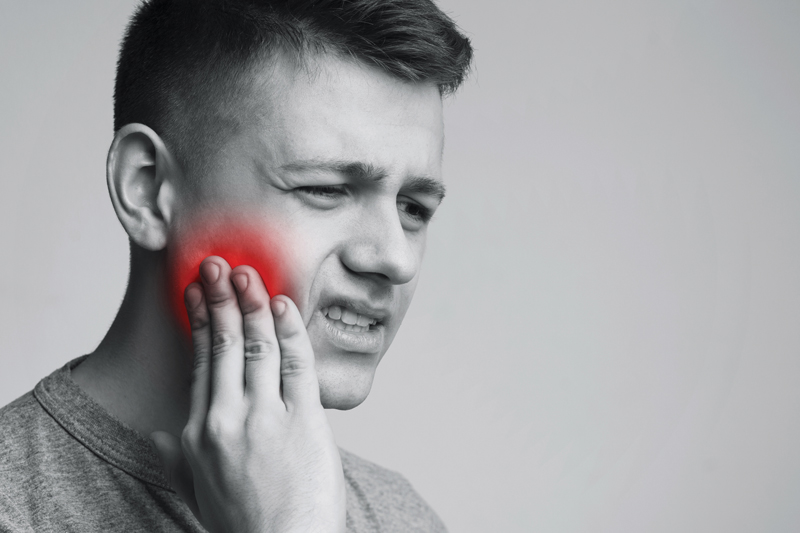Many patients come to see me because they are concerned that they may have a cavitation. A cavitation is an area in the bone that is dead or dying and is caused by trauma, infections, and decreased blood supply to the area. Although commonly found in the jawbone, cavitations can occur in any bone in the body. The most common site is the wisdom tooth area where teeth have been extracted. Jawbone cavitations, recognized as far back as the 1800s, go by several names, such as Neuralgia Inducing Cavitational Osteonecrosis (NICO), Jaw Osteomyelitis, or Jaw Ostitis. These lesions characteristically are not painful, tender, or inflamed, and thus often go undetected. However, these lesions are like cesspools and they become filled with bacteria and their associated toxins and have even been shown to store mercury.
Toxins from Cavitations
Cavitations can cause many systemic problems far from the resident site. That’s why I like to call them SICO lesions or Sickness Inducing Cavitational Osteonecrosis, which better indicates the power these cavitations can have over the general health of the patient. Dr. Boyd Haley, former Head of Chemistry at the University of Kentucky, has shown that toxins from cavitations are more potent than botulinum! Because cavitations can be so toxic (just like root canals), they have been associated with many different symptoms or diseases. Some examples are angina, arthritis, asthma, colitis, eczema, hypertension, migraines, and other pain syndromes such as trigeminal neuralgia.
All teeth are on acupuncture meridians and relate to different organs, tissues, vertebrae, and muscles. Most jaw cavitations are in the wisdom tooth area and this area relates to the heart meridian. Many years ago, I developed a heart arrhythmia which did not correct with vitamin and mineral supplementation. Upon energetic testing, I discovered a single cavitation in the area where an oral surgeon had removed my wisdom tooth twenty years prior! The subsequent resolution of the cavitation cured my arrhythmia and it has never come back.
How Can Cavitations Be Detected?
Sometimes a cavitation can be seen on an X-ray, as the bone will not look normal or will appear as absent. 3D CAT scans are helpful; however, I find the best way to detect cavitations is with energetic testing such as with EAV (Electroacupuncture According to Voll).
Do All Cavitations Need Treatment?
I believe that almost everyone has a cavitation somewhere. These can occur in any bone, especially in the jawbones; thus, many holistic dentists perform a lot of cavitational surgery. However, if the cavitations do not show a deleterious systemic effect upon testing with EAV, I do not treat it surgically. I find that in most instances, I can avoid surgery by treating the whole patient. By “treating the whole patient,” I mean treating the patient on the physical and nonphysical level (visit our website: wholebodymed.com to learn more about the physical and nonphysical level in the post “You Look Like an Egg to Me”). By eliminating patients’ toxins and treating them in a whole-body manner to improve their entire immune system, and with ozone injections into cavitational sites, I find that I can usually avoid surgery. Treating in this manner also prevents multiple cavitational surgeries.
I have seen patients with two, three, or four cavitational surgeries and still have a cavitation present. This occurs because the whole patient was not treated before the first surgery or subsequent surgeries to ensure success. During cavitation surgery, the dentist can do everything correctly, but if the patient’s terrain is not healthy, they will not heal well.
When a person has pain and a cavitation is detected, often injecting a few drops of anesthetic into the cavitation site will immediately remove the pain, thus “proving” the relationship. For example, Sophie had terrible head pain. After seeing many different doctors and having all sorts of scans and tests, there was still no definitive diagnosis. Not wanting to stay on drugs to control the pain, Sophie continued her journey until she found me. I injected a few drops of anesthetic into the bone where I had detected a cavitation and instantly the pain vanished. After treating Sophie with ozone injections into the cavitation and improving her overall health, she was off all medications and was pain-free in a few months. What’s interesting to note is that the ozone gas follows the infection, and often, as in this case, as I injected the ozone gas into the cavitation, Sophie could feel the gas spread to the painful area of her head. As things improved, Sophie no longer felt the spreading of the gas. The extent of spread diminished until it was all gone. Whether treating cavitations or any other health problem, a whole-body approach is essential to a successful outcome.
Mark A. Breiner, DDS, FAGD, FIAOMT is a pioneer and recognized authority in the field of biological and holistic dentistry. He is the author of Whole-Body Dentistry®: A Complete Guide to Understanding the Impact of Dentistry on Total Health. Dr. Breiner practices dentistry in Fairfield, Connecticut. For further information visit: www.wholebodydentistry.com. or call 203.371.0300 ext.1.
